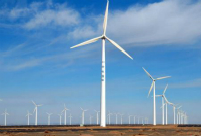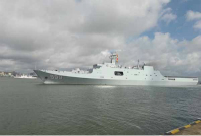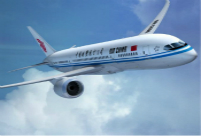

Chinese Vice Premier Wang Yang on Tuesday called on the United States to relax export barriers against China and allow the two sides to tap the huge market potential in bilateral trade.
"The Chinese and U.S. economies do have a competitive dimension, but there is far greater complementarity than competition," he said at a business luncheon in Washington ahead of the first China-U.S. Comprehensive Economic Dialogue, which is slated for Wednesday.
As the Chinese economy continues to grow at a medium-high speed and climb higher on the value chain, China's traditional industries are transformed and upgraded at a faster pace, and emerging industries flourish, he said.
Thanks to that, "there is huge market potential to tap in U.S. export of advanced technologies, key equipment and critical parts to China," the vice premier pointed out.
"Unfortunately, American businesses have not had their fair share of the 'cake' due to outdated U.S. regulations on export control," he said, noting that while U.S. high-tech exports to China accounted for 16.7 percent of China's total imports of such products in 2001, the percentage dropped to 8.2 percent last year.
Taking integrated circuits (IC) as an example, he said China's IC imports amounted to a whopping 227 billion U.S. dollars last year, more than the imports of crude oil, iron ore and primary plastics combined, but only 4 percent came from the United States.
Citing an op-ed by the Carnegie Endowment for International Peace last April, Wang said that if the United States were to liberalize its export barriers against China to the same level as those applicable to Brazil or France, the U.S. trade deficit with China would narrow by up to 24 percent and 34 percent respectively.
He also stressed that China now has 300 million people in the middle-income group and their demand for quality U.S. goods and services is swelling by the day.
The U.S.-China Business Council, he noted, predicts that American goods and services exports to China will double to 369 billion dollars in the next decade and rise to 520 billion dollars by 2050.
"There is no limit to the growth of the Chinese market, and China-U.S. business cooperation holds out a promising future," he said.
 Picturesque summer scenery of Tuohulasu Prairie in Xinjiang
Picturesque summer scenery of Tuohulasu Prairie in Xinjiang Colors of summer: Yanhu lake transforms into muti-colored pools
Colors of summer: Yanhu lake transforms into muti-colored pools China’s high-speed railway now offers food at the click of a button
China’s high-speed railway now offers food at the click of a button New uniform coming to PLA
New uniform coming to PLA Gambler or dreamer?
Gambler or dreamer? China is world’s largest renewable energy producer, consumer
China is world’s largest renewable energy producer, consumer Chinese base in Djibouti not military expansion
Chinese base in Djibouti not military expansion Legislation needed to protect China’s dark sky resources
Legislation needed to protect China’s dark sky resources China’s domestic airlines' carrying capacity beats the US
China’s domestic airlines' carrying capacity beats the US Top 10 most sustainable cities in China
Top 10 most sustainable cities in China Top 10 European patent applicants in 2016
Top 10 European patent applicants in 2016 The power of 'She' in China
The power of 'She' in China Seven most beautiful art museums in China
Seven most beautiful art museums in China Overseas forces must stop politicizing Liu Xiaobo's wife
Overseas forces must stop politicizing Liu Xiaobo's wife Seeing singletons as a potential problem, Communist Youth League demonstrates matchmaking prowess
Seeing singletons as a potential problem, Communist Youth League demonstrates matchmaking prowess  India follows China’s path to factory power
India follows China’s path to factory power  Male doctoral students become leftovers in China’s marriage market
Male doctoral students become leftovers in China’s marriage market Day|Week